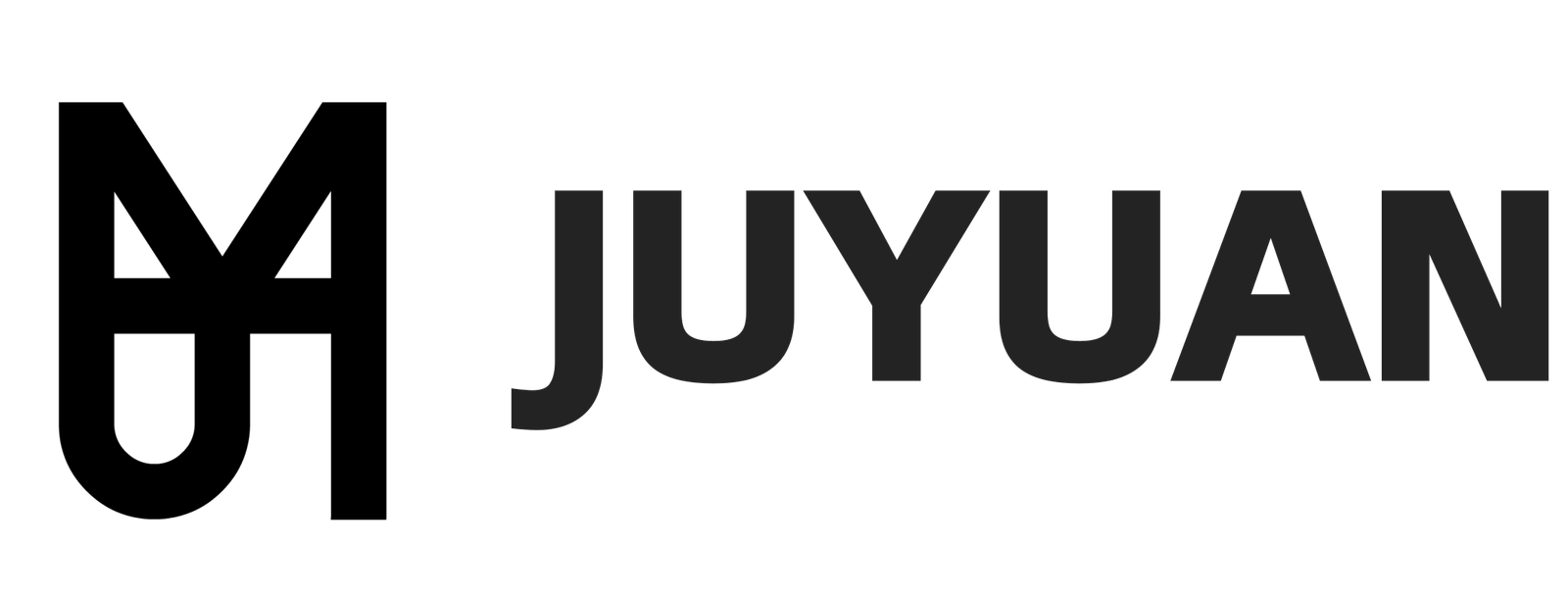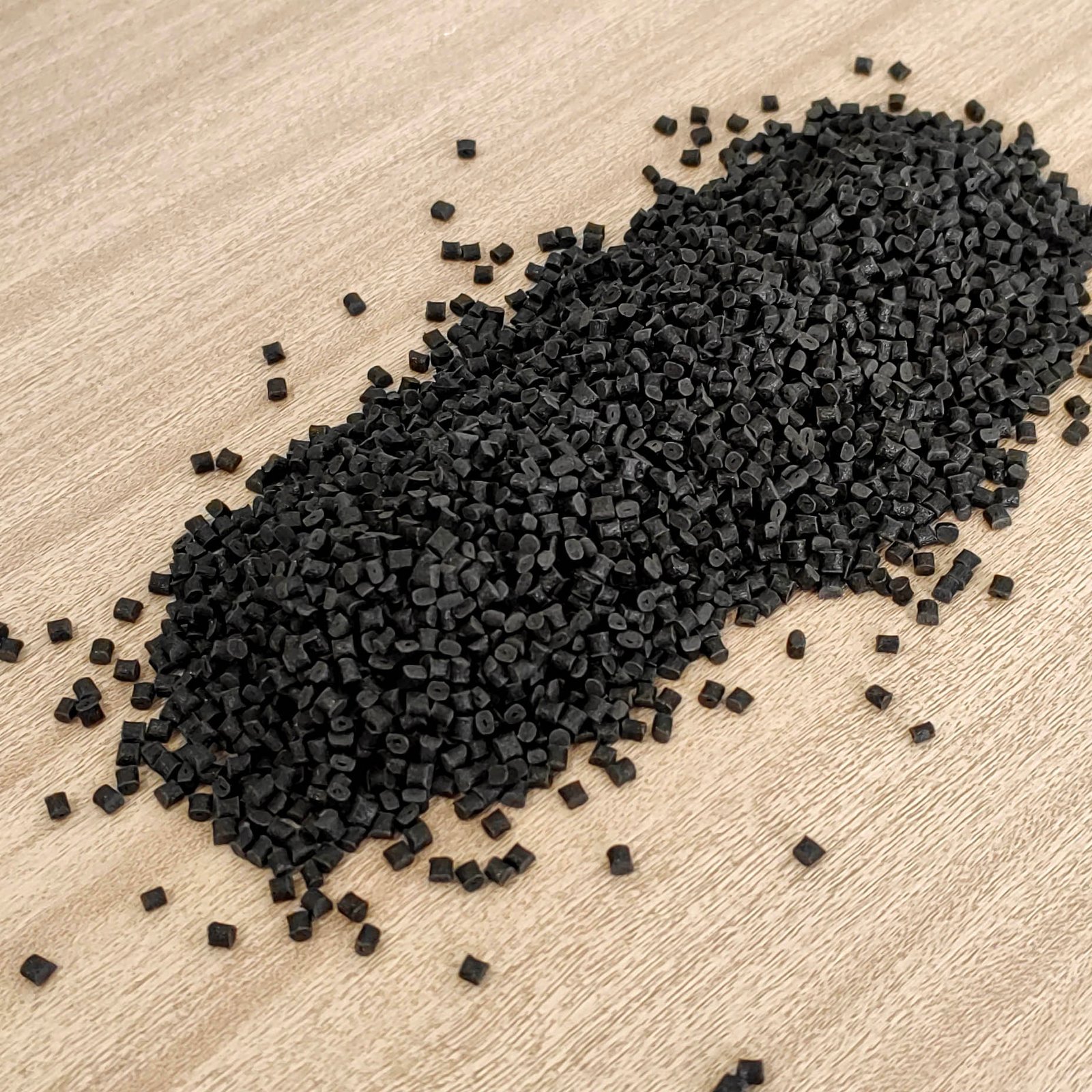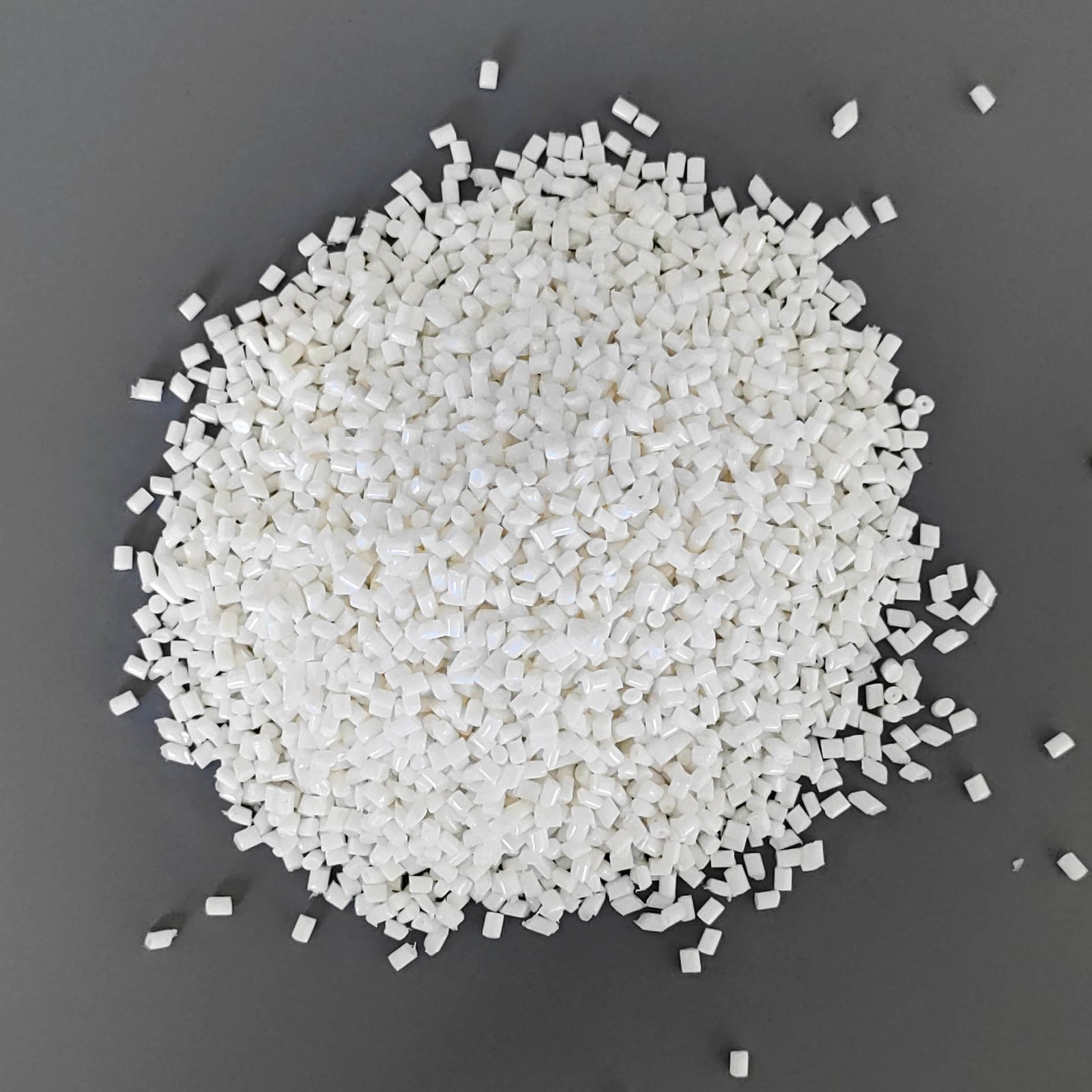PRODUCTOS


Celanese PBT 3316 Plastic Overview | Properties and Data Sheet
Estructura del producto
What is PBT 3316 Plastic
Against the backdrop of electronic products constantly evolving towards miniaturization, high integration and high reliability, the performance requirements for structural materials are also upgrading simultaneously. Flame retardancy, safety, electrical insulation, thermal stability and processing efficiency have become the core considerations when selecting materials for structural components such as connectors, relays and power modules. The PBT 3316 launched by Celanese is precisely a material solution designed for such high-performance electronic applications. Based on the traditional glass fiber reinforced PBT, it further optimizes the flame retardant system and processing performance, achieving a comprehensive improvement in material performance and manufacturing compatibility.

01 | Comprehensive Performance Analysis: Triple Enhancement in heat, electricity and mechanics
Comprehensive coverage of flame retardant safety
PBT 3316 achieves UL94 V-0 grade in all test thicknesses ranging from 0.38mm to 3.0mm, and even reaches the strict 5VA grade when ≥1.5mm, meeting the high standards of fire protection grades for electronic and electrical appliances.
Outstanding thermal stability, suitable for long-term use at high temperatures
The HDT of the material reaches 220°C at 0.45MPa, the Vicat softening point is 225°C, and the RTI (electrical) is as high as 140°C, meeting the requirements of long-term high-temperature operation environments such as new energy vehicle control modules and industrial power connectors.
High Strength + Impact Resistance for Structural Reliability
The 30% glass fibre reinforced structure delivers a tensile strength of 135 MPa, a flexural modulus of 10,300 MPa, and a notched impact strength of 8.5 kJ/m², which ensures rigidity and maintains good drop resistance.
It has both electrical insulation and dimensional stability
The volume resistance is 1E16 Ω·cm, the dielectric strength is 34 kV/mm, the water absorption rate is as low as 0.4%, the moisture absorption rate is only 0.16%, the linear expansion coefficient is low, and the electrical performance and external dimensions can remain stable in a humid environment.
02 | From Materials to the End: Ideal materials for electronic structural components
The development of PBT 3316 fully considers the multiple demands of electronic structural components for high temperature resistance, fire resistance, strength and processing and forming, and is particularly suitable for:
✔ High-frequency connector housing and socket
✔ Industrial-grade relay base and module housing
✔ Vehicle-mounted ECU connectors and terminal sockets
Its good fluidity (melt index 12 g/10min), low warpage rate and no precipitation performance enable it to smoothly adapt to high-speed multi-cavity mold injection molding, reduce mold contamination and improve production efficiency.
03 | Overview of Core Performance Data of PBT 3316
| UL | Condición | Estándar | Valor | Unidad | |||
| CTI | IEC 60112 | 2 | SOCIEDAD ANÓNIMA | ||||
| Resistividad volumétrica | Norma ASTM D257 | 1E16 | Ω.cm | ||||
| Dimensional Stability | UL746 | 0.0 | % | ||||
| Rigidez dieléctrica | Norma ASTM D149 | 23 | kilovoltios/mm | ||||
| Resistencia al arco | ASTM D495 | 6 | SOCIEDAD ANÓNIMA | ||||
| Clasificación de llama | All Color 0.38mm | UL94 | V-0 | ||||
| Clasificación de llama | Todos los colores 0,75 mm | UL94 | V-0 | ||||
| Clasificación de llama | Todos los colores 1,5 mm | UL94 | V-0 5VA | ||||
| Clasificación de llama | All Color 2.0mm | UL94 | V-0 5VA | ||||
| Clasificación de llama | Todos los colores 3,0 mm | UL94 | V-0 5VA | ||||
| Comportamiento mecánico | Condición | Estándar | Valor | Unidad | |||
| Alargamiento | Break 5mm/min | ISO 527 | 2.5 | % | |||
| Resistencia a la flexión | 23ºC | ISO 178 | 200 | MPa | |||
| Módulo de flexión | 23ºC | ISO 178 | 10300 | MPa | |||
| Impacto de muesca Izod | 23ºC | ISO 180 | 7.7 | kJ/m² | |||
| Resistencia a la tracción | Break 5mm/min | ISO 527 | 135 | MPa | |||
| Módulo de tracción | ISO 527 | 10700 | MPa | ||||
| Impacto Charpy sin muesca | 23ºC | ISO 179 | 59 | kJ/m² | |||
| Impacto Charpy sin muesca | -30°C | ISO 179 | 42 | kJ/m² | |||
| Impacto con entalla Charpy | 23ºC | ISO 179 | 8.5 | kJ/m² | |||
| Impacto con entalla Charpy | -30°C | ISO 179 | 8.5 | kJ/m² | |||
| Térmico | Condición | Estándar | Valor | Unidad | |||
| HDT | 0,45MPa | ISO 75 | 220 | °C | |||
| HDT | 1,8MPa | ISO 75 | 208 | °C | |||
| HDT | 8.0MPa | ISO 75 | 165 | °C | |||
| Temperatura de fusión | 10 °C/min | ISO 11357 | 225 | °C | |||
| CLE | Fluir | ISO 11359 | 2.5E-5 | cm/cm/°C | |||
| CLE | xFlujo | ISO 11359 | 8E-5 | cm/cm/°C | |||
| Temperatura de ablandamiento Vicat | 50 °C/h 50 N | ISO 306 | 225 | °C | |||
| Propiedad fisica | Condición | Estándar | Valor | Unidad | |||
| Absorción de agua | 23°C Saturation | ISO 62 | 0.4 | % | |||
| Absorción de humedad | 23 °C 50HR | ISO 62 | 0.16 | % | |||
| Contracción | Fluir | ISO 294 | 0.3~0.5 | % | |||
| Contracción | xFlujo | ISO 294 | 0.8~1.1 | % | |||
| Densidad | ISO 1183 | 1.66 | gramos/cm³ | ||||
| Índice de fusión | 250°C 2.16kg | ISO 1133 | 12 | g/10min | |||
| Índice de fusión | 250°C 2.16kg | ISO 1133 | 7 | cm³/10min | |||
| Propiedades electricas | Condición | Estándar | Valor | Unidad | |||
| CTI | IEC 60112 | 250 | V | ||||
| Constante dieléctrica | 1 MHz | IEC 60250 | 2.9 | ||||
| Constante dieléctrica | 100 Hz | IEC 60250 | 3.6 | ||||
| Resistividad volumétrica | CEI 60093 | 1E+15 | Ω.cm | ||||
| Rigidez dieléctrica | CEI 60243 | 34 | kilovoltios/mm | ||||
| Factor de disipación | 1 MHz | IEC 60250 | 0.0145 | ||||
| Factor de disipación | 100 Hz | IEC 60250 | 0.0033 | ||||
| Resistividad superficial | CEI 60093 | 1E15 | Ω | ||||
| Dureza | Condición | Estándar | Valor | Unidad | |||
| Dureza Rockwell | R(Escala) | ISO 2039 | 89 | ||||
| Dureza Shore D | 15 segundos | ISO 868 | 85 | ||||
04|Performance Comparison: PBT 3316 vs. Conventional Flame-Retardant Glass Fiber PBT
| Propiedad | PBT 3316 | Standard 30% GF PBT |
|---|---|---|
| Clasificación de llama | V-0 / 5VA (all thicknesses) | V-0 (≥1.6mm) |
| Hot-wire Arc Tracking Index (HAI, 3.0mm) | PLC = 0 (Excellent) | PLC = 2–3 (Average) |
| Heat Deflection Temperature (0.45 MPa) | 220°C | 200–210°C |
| Resistencia a la tracción | 135 MPa | 120–130 MPa |
| Notched Charpy Impact (23°C) | 8.5 kJ/m² | 6–7 kJ/m² |
| Electrical Stability (Moisture Influence) | High (Water absorption: 0.4%) | Moderate (0.6–0.8%) |
| Mold Contamination Risk | Very low, no blooming | Potential for decomposition residues |
Conclusion:PBT 3316 delivers superior flame consistency, electrical reliability, and thermal resistance compared to conventional flame-retardant 30% GF PBT. It represents a full upgrade over standard solutions in demanding electronic applications.
05|Manufacturing Friendly: Suitable for automated injection moulding and precision machining
Good flowability, easy to fill complex parts
Melt index up to 12 g/10min, suitable for micro plugs and pin structures with high flowability, shortening injection cycle time.
The size shrinkage is controllable and the surface is smooth
The shrinkage rate in the flow direction is as low as 0.3%, and the precision of the finished product is high. The glass fibers are evenly distributed, reducing the problems of glass fiber protrusion or silver streaks on the surface.
No seepage or minimal precipitation leads to a longer service life of the mold
The lubrication system in the material formula is optimized, remaining stable at high temperatures, less prone to cavity precipitation, and extending the maintenance cycle.
06 | Ductility and Sustainability: Reference Samples for Future Electronic Materials
PBT 3316 not only focuses on current demands, but also has the potential to extend in a sustainable direction:
The formula can be extended to halogen-free flame retardant systems, meeting stricter regulations such as RoHS and REACH
It can be mixed with other modified components (such as UV resistance and chemical resistance), and extended to scenarios such as outdoor electronic and electric vehicle interfaces
It has a high recycling rate and can be reused in some low-end applications, supporting the concept of green manufacturing
07 | Summary | Celanese PBT 3316: A PBT Plastic that Defines "Comprehensive reliability"
From thermal performance to electrical insulation, from processing performance to environmental protection trends, PBT 3316 demonstrates all-round competitiveness beyond the conventional. For electronic manufacturing enterprises that pursue "performance balance + production efficiency", it is not merely a material, but also a solution for the next generation of precision electronic structural components.
【Recomendaciones relacionadas】
BASF PBT B 4500:Unfilled Lubricated PBT Resin for Injection Molding Más información>
Toray PBT 1184G-A15: Reinforced Flame-Retardant PBT for Electronic Components Más información>
Celanese PBT 2002-2: Easy-flow, Non-reinforced PBT for Smooth Injection Molding Más información>






